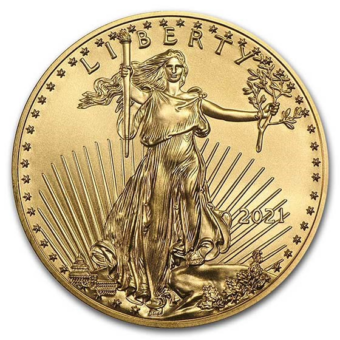A Daily Journey Through the Week's Market
Monday - 9.02.24: Markets closed in the US; Labor Day
Tuesday - 9.03.24: Gold continued its downward trend, closing at $2,492.95, down 0.17%. Silver saw a sharper decline, dropping to $28.05, down 1.65%. This movement was again driven by a stronger U.S. dollar and rising bond yields, which capped the potential for gains in the gold and silver markets
Wednesday - 9.04.24: Gold dipped further, closing at $2,489.00, while silver fell to $27.80. Profit-taking and the dollar's continued strength, bolstered by optimistic U.S. economic data, pressured the metals downward. Investors remained cautious as geopolitical tensions offered some support but were not enough to offset the broader economic factors.
Thursday - 9.05.24: Gold dipped further, closing at $2,489.00, while silver fell to $27.80. Profit-taking and the dollar's continued strength, bolstered by optimistic U.S. economic data, pressured the metals downward. Investors remained cautious as geopolitical tensions offered some support but were not enough to offset the broader economic factors.
Friday - 9.06.24: Following today's U.S. jobs report, gold surged to a one-month high, trading around $2,523 per ounce as weak nonfarm payroll data heightened expectations for Federal Reserve rate cuts. Silver also saw modest gains, rising to $28.94 per ounce. The lower-than-expected job growth reinforced speculation of an accommodative Fed policy, making both precious metals more attractive to investors amid a potential rate cut.
Gold rises on weak jobs report, rate cut hopes grow
Gold prices hit session highs as the U.S. economy added 142,000 jobs in August, below the forecasted 164,000. The unemployment rate held steady at 4.2%, signaling a cooling labor market but not an extreme downturn.
- Gold reaction: December gold futures climbed 0.61%, trading at $2,558.60 per ounce as traders digested the weaker-than-expected job numbers.
- Wage growth: Wages rose 0.4%, beating expectations of 0.3%, with hourly earnings up 3.8% year-over-year.
- Revisions: June and July job data were revised downward, with 86,000 fewer jobs added than previously reported.
- Fed outlook: Markets now see a nearly 50% chance of a rate cut at the Fed's next meeting, though analysts remain divided on the size of the potential cut.
Why it matters: The weaker jobs report bolsters the case for a Fed rate cut, lifting gold prices as investors seek safe havens amid economic uncertainty.
Gold/Silver Ratio Poised For Breakout
The gold/silver ratio is on track for an upward breakout, potentially reaching 100, according to Bloomberg Intelligence’s Mike McGlone. The ratio, currently at 86, reflects gold’s continued outperformance over silver, driven by rising U.S. unemployment and declining bond yields.
Key drivers
- The longest-running U.S. yield curve inversion in history signals that gold may continue to outpace silver.
- Central banks are buying gold, not silver, further supporting the gold rally.
- Industrial demand for silver ties it more closely to stock market fluctuations, unlike gold, which remains a safe-haven asset
What’s next
McGlone sees the ratio pushing higher, especially as volatility returns and unemployment rises, with 100 becoming a realistic target. Gold tends to outperform silver when the yield curve normalizes from steep inversions, a scenario currently unfolding.
August Job Growth Falls Short Of Expectations
Private payrolls rose by just 99,000 in August, the smallest gain since 2021, per ADP's latest report. This was far below the forecasted 140,000 and the revised 111,000 added in July. ADP's chief economist, Nela Richardson, noted that hiring has slowed following two years of significant growth post-Covid.
The details:
- Sectors that saw declines included professional and business services (-16,000), manufacturing (-8,000), and information services (-4,000).
- However, education and health services added 29,000 jobs, construction increased by 27,000, and financial activities gained 18,000.
What’s next:
Markets are eyeing the Fed's September 17-18 meeting for possible rate cuts, driven by the weakening jobs picture. With hiring slowing, analysts expect at least a quarter percentage point cut this month, and a full percentage point reduction by year-end.
Stay tuned for the Bureau of Labor Statistics' more comprehensive nonfarm payrolls report, due Friday, which could give further insight into the labor market’s trajectory.
Gold shines as stocks and cryptos slide, traders bet on 4 rate cuts in 2024
Gold is gaining momentum as stocks and cryptocurrencies take a hit, with traders now predicting multiple interest rate cuts for 2024. Market volatility and weak jobs data are driving shifts in investor sentiment.
- Market action: Crypto gains wiped out, stocks dip, and gold stands out.
- Bitcoin struggles: BTC lost 4% of Wednesday's rally, dropping back to $56,058.
- Jobs data: Weak private sector hiring fuels concerns that the Fed has pushed the economy too far.
- Rate cuts: Traders now predict four rate cuts in 2024, with increasing pressure on the Fed.
- Fed outlook: Tomorrow’s jobs report could solidify whether a 50 basis-point cut is on the table. Markets brace for more volatility.
Why it matters: Investors are navigating a volatile landscape as inflation, labor market data, and rate cuts shape market sentiment. Traders are leaning towards significant rate cuts, while Bitcoin's trajectory remains uncertain. All eyes are on the Fed's next move.
BRICS Pay Blockchain System Set To Launch Next Month
The BRICS Pay platform, first introduced in March, could launch as early as next month, coinciding with the group’s 2024 Annual Summit. This blockchain-based payment system is expected to transform global finance and support the bloc’s de-dollarization efforts.
The details:
- The system will allow BRICS nations to settle transactions using local currencies, reducing reliance on the U.S. dollar.
- Russian aide Yury Ushakov confirmed the project is based on advanced digital and blockchain technologies.
- Moscow's increasing openness toward cryptocurrencies, including plans for crypto exchanges and stablecoins, complements this initiative.
Why it matters:
- The BRICS Pay platform will serve as an alternative to the Western SWIFT system, positioning itself as a mechanism for the global south.
- The U.S. dollar's share of global reserves has dropped to 58% in 2024, down from 72% in 2002, reflecting the increasing challenge from initiatives like BRICS Pay.
Expect more announcements at the upcoming BRICS Summit, where the payment system is likely to be a central focus.
Gold Rises As Labor Market Weakens
Gold prices climbed higher Thursday, boosted by a weak ADP report showing the private sector created just 99,000 jobs in August, well below the 144,000 forecast. December gold futures jumped nearly 1%, trading at $2,550.60 an ounce.
Key drivers
- ADP data highlighted slower-than-expected job growth, supporting gold’s momentum as investors shift expectations toward a Federal Reserve rate cut.
- Wages remained stable, with a 4.8% increase for workers who stayed in their jobs and 7.3% for those who switched roles.
Sector breakdown
- Goods-producing sectors added 27,000 jobs.
- Service sector gains were more volatile, with 72,000 new jobs.
- Manufacturing saw a decline, losing 8,000 jobs
With more signs of a slowing labor market, analysts expect the Fed to cut rates by 50 basis points later this month.
Chinese banks reject 80% of payments in Russian ruble amid rising sanctions
Chinese banks are turning away the Russian ruble, rejecting roughly 80% of payments made in the currency. The move comes as the U.S. imposes new sanctions on Russia, complicating trade between two key BRICS members.
- Ruble rejection: Chinese banks are delaying and eventually rejecting payments in Russian rubles, leaving Russian businesses in limbo. Payments are often held for weeks before being returned or declined without explanation.
- Sanctions pressure: The ruble rejection follows a new wave of U.S. sanctions targeting Russian financial institutions, businesses, and high-net-worth individuals.
- Impact on trade: The disruption comes at a time when China and Russia have significantly expanded trade, with the ruble and yuan as central currencies. This could lead to additional costs for Russia, increasing processing times and risks of fraud as the rejection goes beyond the banking sector.
Why it matters: The rejection of the ruble by Chinese banks signals growing tension between BRICS members and challenges efforts to circumvent Western sanctions. The move complicates Russia's strategy to bolster trade using its own currency, leaving both countries facing new economic hurdles.
Powell Pivots To Rate Cuts As Recession Looms
At the recent Jackson Hole conference, Fed Chair Jay Powell signaled a major shift in policy, pivoting from inflation concerns to rising unemployment. This marks the first formal acknowledgment of the growing risk of a recession, with Powell stating, "The time has come for policy to adjust."
The details
- After months of speculation, Powell confirmed the Fed is preparing to cut interest rates in response to cooling labor market conditions.
- The unemployment rate, now at 4.3%, has risen nearly a full percentage point over the past year, signaling an economic slowdown.
Why it matters
This pivot comes just ahead of the 2024 election, and with the economy showing clear signs of a recession, Powell’s focus on unemployment could impact voter sentiment. Wall Street, having predicted a softer landing, may face a rude awakening as markets adjust to the reality of a more severe downturn.
Expect further market volatility as the Fed moves toward rate cuts and the recession narrative takes hold.
Next Week’s Key Events
Monday, Sept. 9
- 3:00 pm: Consumer Credit (Aug)
Tuesday, Sept. 10
- No scheduled reports
Wednesday, Sept. 11
- 8:30 am: Consumer Price Index (Aug)
Thursday, Sept. 12
- 8:30 am: Initial Jobless Claims (Sept. 7)
- 8:30 am: Producer Price Index (Aug)
Friday, Sept. 13
- 10:00 am: Consumer Sentiment (Prelim) (Sept)
IMPACT ON PRECIOUS METALS MARKETS
Consumer Credit
A rise in consumer credit indicates stronger borrowing, suggesting increased consumer spending, which can signal economic growth. If consumer credit grows more than expected, it could lead to inflation concerns, potentially increasing demand for gold and silver as inflation hedges.
Consumer Price Index (CPI)
The CPI is a key measure of inflation. Higher-than-expected inflation often boosts demand for gold and silver, as they are seen as traditional stores of value. Conversely, lower-than-expected inflation could reduce their appeal as inflation hedges.
Initial Jobless Claims
This report reflects the health of the labor market. If jobless claims are rising, it suggests economic weakness, which could lead to a higher demand for gold and silver as safe-haven assets. A decrease in claims would signal economic strength, which could reduce demand for precious metals.
Producer Price Index (PPI)
The PPI measures wholesale inflation. A higher-than-expected PPI indicates rising inflationary pressures, potentially increasing demand for gold and silver. A lower PPI would have the opposite effect, as it suggests inflation is under control.
Consumer Sentiment
Consumer sentiment gauges confidence in the economy. If consumer sentiment is weak, it may indicate economic concerns, leading to higher demand for safe-haven assets like gold and silver. Strong consumer sentiment typically decreases the demand for precious metals as it reflects economic confidence.






















